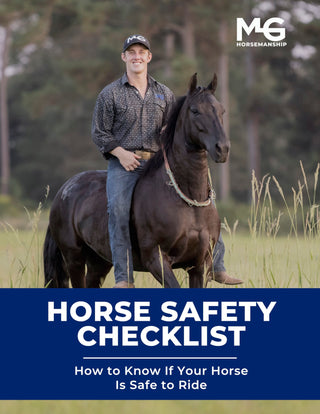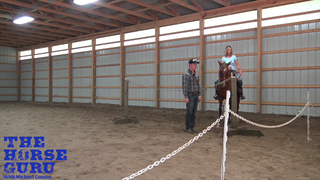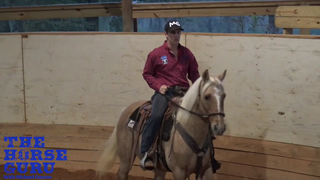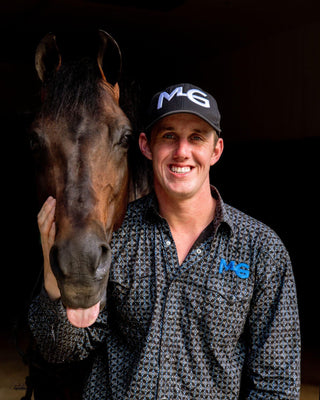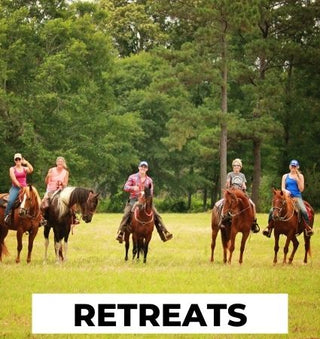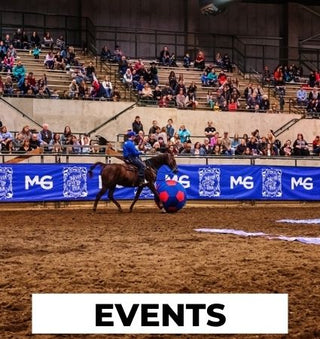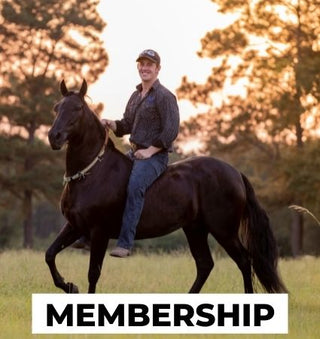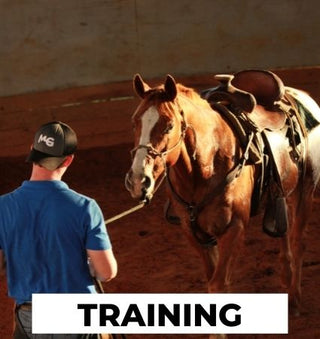Watch the Video Here or continue reading below!
Why Do Riders Struggle with the Canter?
For many riders, the canter can feel intimidating. It's faster than a trot, and its rocking motion can be uncomfortable if you're not properly balanced in the saddle. The key to overcoming this discomfort lies in understanding the dynamics of the canter, improving your position, and relaxing into the movement.
Michael Gascon, a seasoned horse trainer and expert, shares his own journey of overcoming fears of the canter. He highlights how, even as a long-time rider, he struggled with his seat and posture on the canter—especially on horses with more movement, like warmbloods and quarter horses. With the right tools, though, anyone can improve their confidence at the canter.
1. Perfecting Your Seat for Better Stability
The foundation of your confidence in the canter starts with your seat. A common mistake riders make is sitting too far back in the saddle, which can throw off your equilibrium. When you sit too far back, your shoulders lean forward, and your heels shift behind your hips, making you feel unbalanced.
To correct this, Michael recommends scooting yourself to the front of the saddle and sitting deep into your seat. Imagine you're sitting on your pockets, not just your butt, which will bring your shoulders back and your heels forward. This position helps maintain your balance and ensures you're sitting in the center of your saddle, giving you the stability you need to canter confidently.
2. Relax and Move with Your Horse
Tension in your body can cause a disconnect with your horse, making the ride feel rough and uneasy. It's important to relax and allow your body to move naturally with the horse. When you're tense, your movements are stiff, and you may fight the motion of the canter. To feel confident, you need to go with the flow of your horse’s movement.
Michael emphasizes the importance of exhaling and staying relaxed during the canter. This helps you stay connected with your horse. By releasing tension in your body, you're allowing yourself to absorb the movement and maintain balance.
3. Adjusting Your Horse’s Head Position
The way your horse carries its head can significantly impact your comfort and confidence in the canter. A horse with its head held high and back hollowed out will cause a rough ride. In contrast, when a horse carries its head low and its back rounded, the ride becomes smoother and more comfortable for the rider.
Michael suggests that, before you even begin your canter transition, you should focus on having your horse lower its head. This simple adjustment can drastically improve your ride. It allows the horse’s body to move more fluidly, giving you a smoother canter. The key is to maintain a light contact on the reins, encouraging the horse to soften and engage its core.
4. Focus on a Controlled, Relaxed Canter
Once you’ve established a proper seat and your horse is moving in a collected frame, it’s time to practice the canter. Michael recommends cantering in a small area where you don’t have to worry about steering or speed. This way, you can focus solely on relaxing into the canter and becoming more comfortable with the motion.
When you’re ready to transition into the canter, use just one leg for the cue, ensuring the horse’s hips drop to the inside to pick up the correct lead. Avoid rushing into the canter, and instead focus on a controlled, relaxed movement. Over time, you’ll build your confidence as your horse starts to respond more smoothly to your cues.
5. Pro Tips for Building Confidence
- Don’t Sit Forward: Sitting too far forward in the saddle can throw off your balance. Stay centered and relaxed in the saddle to maintain control.
- Don’t Choke Up on the Reins: Avoid pulling too hard on the reins during the canter. Give your horse freedom in its movement and avoid creating tension in its mouth. A horse that feels free to move is more likely to canter smoothly.
- Don’t Chase the Horse: Some riders try to "chase" the horse by pushing too much, especially in the early stages of learning. This only leads to tension and can make the ride feel choppy. Focus on following the horse’s movement instead of trying to control it too much.
6. Practice Makes Perfect: Build Your Confidence Over Time
To truly build your confidence at the canter, consistency is key. Michael suggests practicing the canter for at least 10 minutes a day. Over time, you’ll feel more at ease as your muscles adapt and your body becomes accustomed to the canter’s rhythm.
Start by cantering in a small space where you can relax and focus solely on the movement. As your confidence grows, you’ll find it easier to canter in larger spaces and handle faster speeds.
Conclusion: Confidence Comes with Consistent Practice
Building rider confidence at the canter is a process that requires patience and persistence. By focusing on your seat, relaxing your body, and making subtle adjustments to your horse’s movement, you’ll gradually become more comfortable and confident in the canter. Remember to take it slow, and don’t be afraid to push past your comfort zone. With time and practice, you’ll find yourself cantering with ease and enjoying the ride.
Get 30-day horse training for FREE—join the Horse Help Challenge now HERE!



